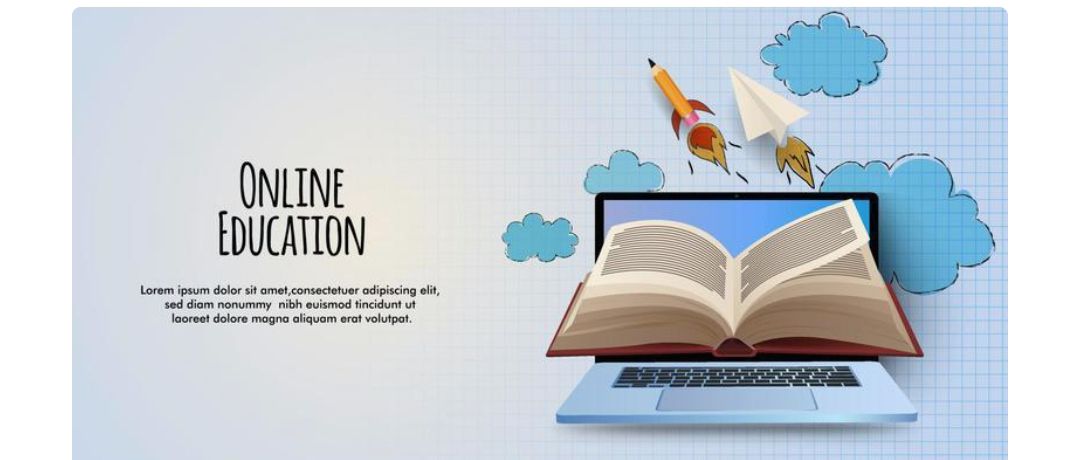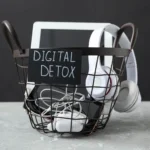
Cast aside your textbooks for a moment, knowledge seekers, and imagine a world where classrooms transcend physical limitations. Picture yourself curled up on a comfy couch, sipping a warm beverage, or maybe even relaxing in a beach hammock (because why not?), all while actively expanding your knowledge base. This isn’t some futuristic fantasy – it’s the captivating reality of online education, a revolution that’s been quietly brewing for centuries and is now poised to shape the future of learning.
The Seeds of Innovation: A Snail Mail Springboard (1728 & Beyond)
The story of online education is surprisingly rooted in the distant past. Believe it or not, the seeds of this educational revolution were sown way back in 1728 by a pioneering Englishman named Caleb Philipps. Intrigued by the idea of knowledge dissemination, Philipps offered shorthand lessons via snail mail. Yes, you heard that right! Students enrolled in his program received meticulously handwritten materials outlining the intricacies of shorthand, and diligently returned their completed assignments through the postal service – the OG version of distance learning, if you will. Fast forward to the late 19th century, and universities like the University of London began offering correspondence courses, allowing students the flexibility to study independently and earn degrees at their own pace.
The Technological Spark: From Slide Projectors to the Personal Computer Revolution (1950s-1980s)
The mid-20th century witnessed the introduction of educational technologies that began to lay the groundwork for a more interactive learning experience. Imagine classrooms equipped with slide projectors whizzing through historical photographs or intricate scientific diagrams. Television also entered the educational scene, with universities and institutions broadcasting lectures and educational programs directly into living rooms. Then came the personal computer revolution of the 1980s, forever altering the educational landscape. Enter computer-assisted instruction (CAI), where universities began experimenting with software programs to deliver course content, assessments, and even offer a rudimentary form of practice exercises.
The Dawn of the Online Age: The Rise of the Virtual Classroom (1989-2000s)
The late 1980s and 1990s witnessed the dawn of online education as we recognize it today. In 1989, the University of Phoenix, a true trailblazer in online learning, began offering degree programs through CompuServe, one of the first consumer online services. This was a pivotal moment, marking the initial shift towards online education platforms. Shortly thereafter, the invention of the World Wide Web in 1991 opened a virtual Pandora’s box of possibilities. Universities like the University of Phoenix, ever the early adopter, were quick to adapt, offering online courses accessible through user-friendly web browsers. This period also saw the rise of Learning Management Systems (LMS), online platforms that streamlined course delivery, communication between students and instructors, and the management of student assessments. Imagine a central hub where students could access course materials, participate in online discussions, and submit assignments electronically – a far cry from the snail mail days!
The Age of Democratization: MOOCs, Micro-Credentials, and Lifelong Learning (2000s-Present)
The 21st century has witnessed a surge in the popularity of online education, transforming it from a niche concept to a mainstream mode of learning. The emergence of Massive Open Online Courses (MOOCs) in the mid-2000s played a significant role in this democratization of education. Platforms like Coursera and edX burst onto the scene, offering courses on a vast array of subjects, often for free, and taught by prestigious universities from around the world. Suddenly, high-quality education from Ivy League institutions became accessible to anyone with an internet connection, regardless of location or socioeconomic background. This period also saw the rise of micro-credentials, bite-sized online courses that equip learners with specific skills relevant to the ever-evolving job market. Whether you wanted to learn the intricacies of data analysis or master the art of social media marketing, there was a micro-credential course waiting to address your specific needs. Today, online education is a cornerstone of lifelong learning, allowing individuals to continuously upskill and reskill throughout their careers. Imagine a world where you can learn a new language, explore the intricacies of astrophysics, or delve into the world of creative writing – all at your own pace and convenience.
A Glimpse into the Future: Where are We Headed?
The future of online education is brimming with possibilities that would have astounded our snail mail-wielding forebears. Expect to see even more personalized learning experiences, with AI-powered platform tailoring instruction to individual needs and learning styles. Imagine an online learning platform that analyzes your strengths, weaknesses, and preferred learning pace, then curates a personalized learning path with adaptive content, targeted instructions, and interactive exercises that cater to your unique way of absorbing information. No more one-size-fits-all approaches – online education will become a truly individualized journey towards knowledge acquisition.
Virtual reality (VR) and augmented reality (AR) hold immense potential for immersive learning experiences that bring abstract concepts to life. Imagine dissecting a virtual frog in biology class or exploring the pyramids of Giza from the comfort of your living room. VR and AR have the power to transport you to different historical eras, delve into the human body, or even navigate the complexities of the solar system – all in a safe, interactive, and visually stunning environment. These technologies will not only enhance understanding but also foster a sense of wonder and engagement, making learning an exciting adventure.
The lines between online and offline learning will continue to blur, creating a dynamic blended learning environment. Imagine a world where classroom lectures are complemented by interactive online modules, where group projects seamlessly integrate online collaboration tools, and where students can access additional learning resources and practice exercises at their own pace. This blended approach leverages the strengths of both traditional and online learning, fostering a more comprehensive and engaging educational experience.
The Future is Yours to Explore
Online education has evolved from its humble snail mail beginnings into a powerful force shaping the future of learning. It offers flexibility, affordability, accessibility, and the ability to learn at your own pace. Whether you’re a busy professional seeking to upskill, a recent graduate exploring career options, or a lifelong learner with a thirst for knowledge, online education offers a gateway to endless possibilities.
Ready to embark on your own online learning adventure? Stay tuned for future blog posts where we delve deeper into the exciting world of online education platforms, explore tips and tricks for successful online learning, and answer all your burning questions!
In the comments below, share your experiences with online education. Have you taken any online courses? What are you most excited about learning online? Let’s keep the conversation flowing and empower each other on this lifelong journey of knowledge acquisition!










